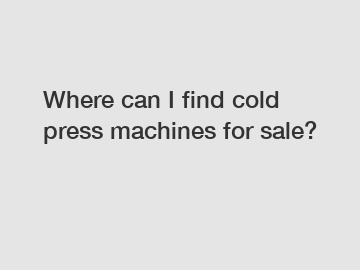What is the DTH method of drilling?
Jul. 02, 2024
What is DTH Drilling?
Down-the-hole drilling (DTH) essentially involves a drilling hammer at the bottom of a drill string. It relies on three elements for drilling holes: bit loading (weight), rotation and air. These active elements combine to be efficient at crushing rock. As the drill string slowly rotates, the drilling hammer is forced into the rock repeatedly. Striking power is provided by compressed air driving a piston inside the hammer.
Down-the-hole (DTH) drilling has made it easier for contractors to drill wells faster and more efficiently, and to transition from dirt boring to rock boring just by adding a compressor and hammer to the drill bit.
Usually, contractors working on a dirt bore would pack up and move on to the next dirt bore when they encountered rock, leaving the rock boring for another contractor to complete.
With DTH drilling, contractors can change the drill that they were using for the current directional bore to a rock drill when they encounter rock by connecting the drill with a compressor and a steerable hammer.
Want more information on DTH drill pipes? Feel free to contact us.
Where is it Used?
DTH drilling is often used in the mining industry (blast hole drilling), on construction sites, drilling water wells, and in the oil and gas industry.
DTH Advantages
1. The DTH system is easily adaptable to most directional drills in a short period of time.
2. Lower operating costs, as the same drill will be used for drilling through dirt and rock.
3. The use of air makes this method very cost-effective as air does not have to be sourced, transported or treated.
4. Less amount of drilling fluid and additives are required.
5. Less weight-on-bit allows for lighter rigs that are easier to set up and takedown.
6. Since cutting force is supplied by reciprocal force, the bit encounters lesser deflection and therefore drills more precisely.
7. Rate of penetration of DTH is 2-5 times greater than the rotary drilling technique.
8. Lesser time consumed compared to when the contractor has to be changed when geology changes.
9. Less wear and tear on the drill bit during drilling operation as the hammer is doing most of the work.
10. DTH requires a minimal amount of rotational torque to cut rock that also allows the hammer to drill straight.
11. Vibrations from the DTH percussive hammer can stimulate the formation to enhance production capability, reducing the need for hydraulic fracturing.
Application
Among all the drilling method, down-the-hole (DTH) drilling is increasingly used and can be very effective in some cases. Down-the-hole drilling mainly has the following six specific applications.
1. Mining includes Surface drilling and Underground drilling
2. RC &#; Exploration includes Exploration and Grade control
3. Quarrying includes Aggregate & limestone and Dimension atone industry
4. Construction includes Civil engineering
5. Well drilling includes Water well and Energy well
6.Oil and gas includes Shallow drilling and Seismic
Compressed Air Power
The DTH hammer is pneumatically powered, with the compressed air propelling it forward to impact and fracture rock. Compressed air also travels through the drill bit into the hole (air exhaust), which blows the chips and dust out of the hole.
Quieter Drilling
From environmental and social perspectives, DTH is a good option because it produces much less noise and vibration than many other drilling methods. Quieter drilling means it is often the preferred drilling method when used in cities and populated areas.
What We've Learned
The DTH method is the most productive and cost-effective method. It is environmentally friendly, as it produces lesser noise and vibration compared to other drilling methods making it ideal for cities.
It also leaves a lesser carbon footprint as it uses low amounts of drilling mud and additives, reducing the amount of drilling fluid that needs to be recycled and disposed of, in turn reducing the number of trips required for disposal of used mud.
This technology will help contractors do more in lesser time at lesser cost and help keep ahead in a very competitive market.
What size of concrete lintel do I need?
How Does Air Source Heat Pump Heating Work?
What are the benefits of the oil press machine?
Is beef jerky safe for my dog to eat?
What machine is used to make cooking oil?
Top 10 Tricks for Maximizing Puffing Machine Efficiency?
What is the difference between screw press and hydraulic press?
The company is the world’s best Crawler Mounted Drilling Rigs supplier. We are your one-stop shop for all needs. Our staff are highly-specialized and will help you find the product you need.
What is DTH Drilling? | Furukawa FRD
Down-the-hole drilling (DTH) essentially involves a drilling hammer at the bottom of a drill string. It relies on three elements for drilling holes: bit loading (weight), rotation and air. These active elements combine to be efficient at crushing rock. As the drill string slowly rotates, the drilling hammer is forced into the rock repeatedly. Striking power is provided by compressed air driving a piston inside the hammer.
Where is it Used?
DTH drilling is often used in the mining industry (blast hole drilling), on construction sites, drilling water wells, and in the oil and gas industry.
DTH Advantages
DTH drilling offers several advantages over top-hammer drilling for larger, deeper holes in medium-hard formations. Because the hammer is at the bottom of the hole, power loss is minimal as the hole deepens. That means energy is not lost in the drill string and penetration rates do not markedly decline with depth&#;provided that back pressure does not rise significantly in the borehole. DTH drilling is most suitable for hole diameters of 4&#;10 inches, with some exceptions.
Compressed Air Power
The DTH hammer is pneumatically powered, with the compressed air propelling it forward to impact and fracture rock. Compressed air also travels through the drill bit into the hole (air exhaust), which blows the chips and dust out of the hole.
Quieter Drilling
From environmental and social perspectives, DTH is a good option because it produces much less noise and vibration than many other drilling methods. Quieter drilling means it is often the preferred drilling method when used in cities and populated areas.
FRD USA offers Tier IV and Tier III (for Central America/the Caribbean) DTH drills. Learn more here or contact us at 800.358..
If you want to learn more, please visit our website Crawler Mounted Pneumatic Tophammer Drill Rig.
What are the top 10 advantages of investing in a high-quality Fish Feed Machine?
Is Shea Butter Tea Seed Oil Extraction Machine Worth the Investment?
The Ultimate Guide to Protein Bar Machines in India
Is natural beauty really better than makeup?
Revolutionize Your Baking with Instant Flour Machine
How to Easily Extract Oil from Nuts at Home: A Step-by-Step Guide
Revolutionize Snacking with 3D Snacks Machine: The Ultimate Guide
94
0
0
Related Articles
-
Revolutionizing Home Cooking: Automatic Oil Press Machine" - Why should every kitchen invest in one?
Revolutionizing Home Cooking: Automatic Oil Press Machine - Why should every kitchen invest in one?
119
0
0
-
Revolutionizing Pasta Production Line Efficiency: Are Robots the Future?
Revolutionizing Pasta Production Line Efficiency: Are Robots the Future?
121
0
0
-
123
0
0
-
Revolutionizing Recycling: The Power of Optical Sorters
**Step-By-Step Guide to Revolutionizing Recycling with Optical Sorters**.
123
0
0
-
128
0
0
-
136
0
0
-
115
0
0
-
Are Horizontal Refuse Transfer Stations the Future of Waste Management?
Waste management is an increasingly pressing issue in our modern society.
126
0
0









Comments
All Comments (0)